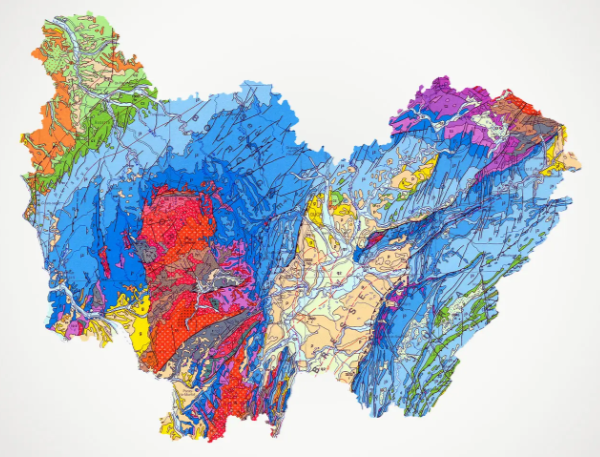Tom Grelet PhD thesis
 H2BFC : study of the natural hydrogen potential in the Bourgogne-Franche-Comté region
H2BFC : study of the natural hydrogen potential in the Bourgogne-Franche-Comté region
Started in march 2025
Funding: Bourgogne-Franche-Comté region and BPI France
Supervisor: Pierre-Yves Collin ; cosupervisor: Emmanuelle Vennin
Abstract
Fossil fuels are currently the most widely used energy sources in industry, transport, the residential and agricultural sectors, accounting for 80 % of energy consumption in 2020. With this high level of energy consumption, the production of greenhouse gases (GHGs) is steadily increasing, and risks further amplifying the various repercussions of global warming. As a result, we need to take global action, through the accumulation of regional measures, to enable this GHG production to slow down, and thus develop and strengthen new measures for the energy transition. In the search for new clean, renewable and decarbonized energies, hydrogen seems to be the most sustainable energy, provided it can be found in its natural state.
As part of this energy transition, the H2BFC project was launched in the Bourgogne-Franche-Comté (BFC) region, with the aim of gaining a better understanding of hydrogen systems in the region, and developing a methodology for assessing this resource. In order to implement this exploratory phase, the project is divided into two parts, which will (1) enable the creation of a regional inventory of favorable sites through the compilation of bibliographic data and the use of geographic information systems, before (2) deepening knowledge of the most relevant cases based on geophysical and geochemical measurements in the field and in the laboratory. The project then requires in-depth knowledge and reflection on the hydrogen systems present in the different geological contexts of the BFC, and in particular on the physico-chemical and bio-physico-chemical processes that are at the origin of the functioning of this system and can explain the processes of formation, migration and accumulation of this hydrogen resource.
- extrait:
- lien_externe:
- titre:
- H2BFC : Etude du potentiel hydrogène naturel en région Bourgogne Franche-Comté
- date_de_debut_these:
- nom:
- Grelet
- date_de_debut_these_numerique:
- kc_data:
- a:8:{i:0;s:0:"";s:4:"mode";s:0:"";s:3:"css";s:0:"";s:9:"max_width";s:0:"";s:7:"classes";s:0:"";s:9:"thumbnail";s:0:"";s:9:"collapsed";s:0:"";s:9:"optimized";s:0:"";}
- kc_raw_content:
 H2BFC : study of the natural hydrogen potential in the Bourgogne-Franche-Comté region
H2BFC : study of the natural hydrogen potential in the Bourgogne-Franche-Comté regionStarted in march 2025
Funding: Bourgogne-Franche-Comté region and BPI France
Supervisor: Pierre-Yves Collin ; cosupervisor: Emmanuelle Vennin
Abstract
Fossil fuels are currently the most widely used energy sources in industry, transport, the residential and agricultural sectors, accounting for 80 % of energy consumption in 2020. With this high level of energy consumption, the production of greenhouse gases (GHGs) is steadily increasing, and risks further amplifying the various repercussions of global warming. As a result, we need to take global action, through the accumulation of regional measures, to enable this GHG production to slow down, and thus develop and strengthen new measures for the energy transition. In the search for new clean, renewable and decarbonized energies, hydrogen seems to be the most sustainable energy, provided it can be found in its natural state.
As part of this energy transition, the H2BFC project was launched in the Bourgogne-Franche-Comté (BFC) region, with the aim of gaining a better understanding of hydrogen systems in the region, and developing a methodology for assessing this resource. In order to implement this exploratory phase, the project is divided into two parts, which will (1) enable the creation of a regional inventory of favorable sites through the compilation of bibliographic data and the use of geographic information systems, before (2) deepening knowledge of the most relevant cases based on geophysical and geochemical measurements in the field and in the laboratory. The project then requires in-depth knowledge and reflection on the hydrogen systems present in the different geological contexts of the BFC, and in particular on the physico-chemical and bio-physico-chemical processes that are at the origin of the functioning of this system and can explain the processes of formation, migration and accumulation of this hydrogen resource.
